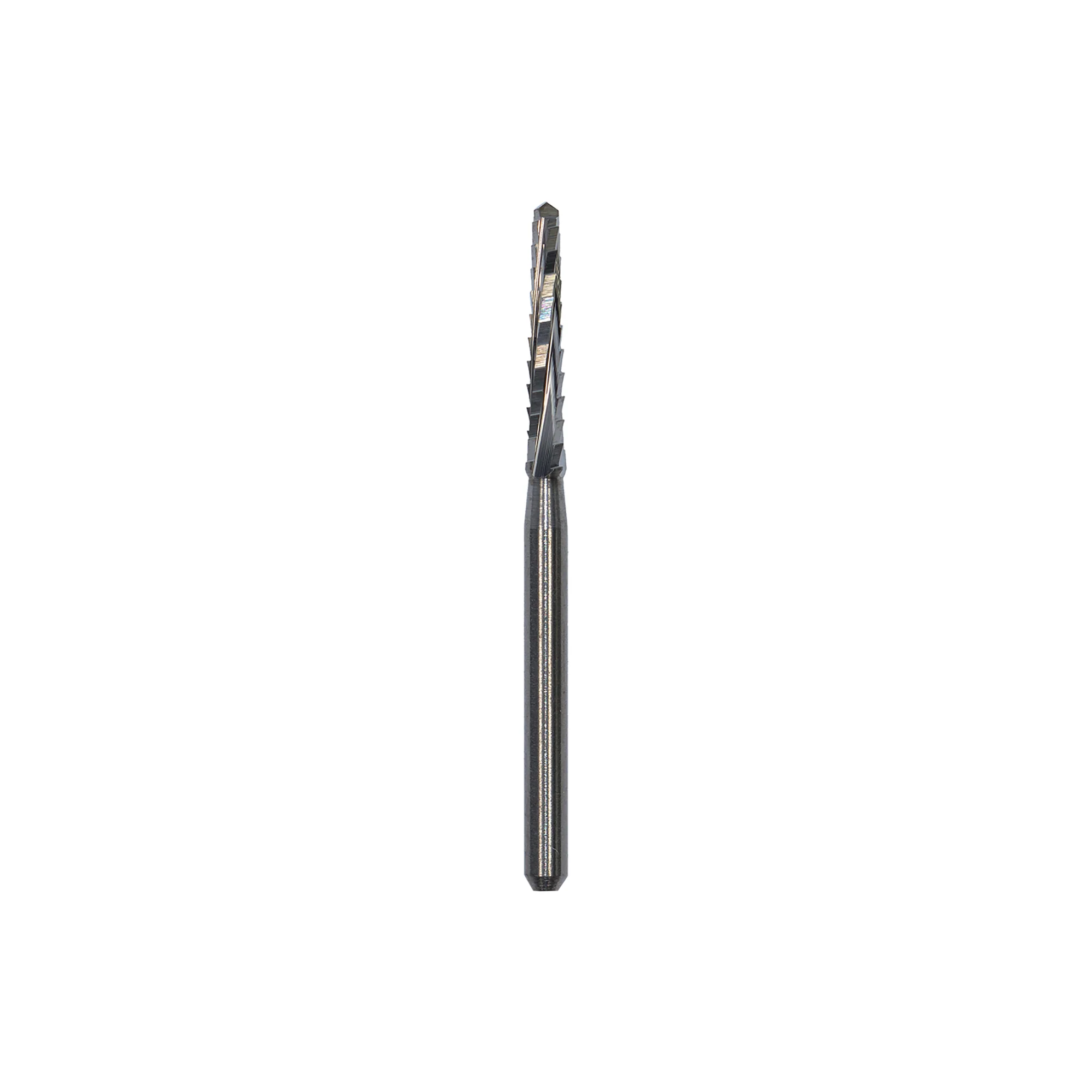Introduction to Fissure Burs in Dentistry
● Definition and Purpose
Fissure burs are essential rotary dental instruments used extensively in dentistry for precise cutting, shaping, and preparation of tooth structures. They play a crucial role in a range of dental procedures, from cavity preparation to tooth extraction. Their intricate design and sharpness allow for enhanced control and efficiency, which are indispensable in modern dental practices.
● Historical Development
The development of fissure burs dates back to the evolution of rotary instruments in dentistry. Over the years, improvements in materials and manufacturing techniques have led to the creation of diverse types of burs, each designed to meet specific clinical needs. This evolution has significantly improved the precision and effectiveness of dental treatments.
Types of Fissure Burs
● Straight Fissure Burs
Straight fissure burs are characterized by their parallel cutting edges, making them ideal for creating flat surfaces and parallel walls during cavity preparation. They are commonly used in the initial stages of cavity preparation where precision and control are paramount.
● Tapered Fissure Burs
In contrast, tapered fissure burs feature angled cutting surfaces, which allow for more flexibility in shaping and contouring tooth surfaces. They are particularly useful in procedures requiring detailed work in hard-to-reach areas, facilitating a more comprehensive dental care approach.
Materials Used in Fissure Burs
● Carbide Burs
Carbide fissure bur dental instruments are renowned for their durability and high cutting efficiency. They are particularly effective for cutting through metal restorations and enamel, offering a longer lifespan than traditional steel burs. Carbide burs are favored for their superior cutting capabilities and reduced risk of overheating during procedures.
● Diamond-Coated Burs
Diamond-coated fissure bur dental tools are ideal for precision work, especially in procedures that require minimal vibration. The fine diamond particles embedded in the bur's surface enhance its abrasive qualities, making it suitable for delicate procedures like contouring and finishing. Their versatile application in both restorative and cosmetic dentistry makes them a staple in dental practices.
Applications of Fissure Burs in Dentistry
● Cutting and Shaping Teeth
Fissure burs are integral to the cutting and shaping process in dentistry, providing the necessary precision for creating contours that fit restorative materials seamlessly. Their use in shaping crowns, bridges, and veneers ensures the durability and aesthetic appeal of these dental solutions.
● Cavity Preparation Techniques
In cavity preparation, fissure bur dental tools are invaluable for removing decayed tissue and preparing the tooth for fillings or crowns. The precision afforded by these burs aids in conserving as much healthy tooth structure as possible, which is vital for the longevity of the restoration and overall oral health.
Advantages of Using Fissure Burs
● Precision and Control
The design of fissure burs provides dentists with unmatched precision and control, which is critical in preventing unnecessary damage to the surrounding tooth structure. This precision is essential for ensuring that restorative work is both functionally effective and aesthetically pleasing.
● Efficiency in Dental Procedures
Fissure burs enhance the efficiency of dental procedures, allowing dentists to perform tasks more quickly and with greater accuracy. This efficiency not only reduces the time patients spend in the chair but also improves the overall quality of dental care.
Techniques for Using Fissure Burs
● Handpiece Compatibility
Compatibility between the fissure bur and the dental handpiece is crucial for optimal performance. Ensuring that burs fit securely into the handpiece reduces vibration and enhances control during procedures, contributing significantly to the accuracy of the work performed.
● Optimal Rotational Speeds
Operating fissure burs at the correct rotational speed is essential for maximizing their cutting performance while minimizing wear and tear. Dentists must be trained in adjusting speeds according to the material being worked on to ensure effective and safe use of burs.
Maintenance and Sterilization of Fissure Burs
● Cleaning Procedures
Regular cleaning of fissure burs is essential to maintain their cutting efficiency and longevity. Debris and biological material should be meticulously removed after each use to prevent contamination and ensure the instrument performs optimally during subsequent procedures.
● Sterilization Methods
Proper sterilization is vital in preventing cross-contamination and infection. Autoclaving is the preferred method for sterilizing fissure bur dental tools, ensuring that they remain safe and effective for patient use.
Safety Considerations When Using Fissure Burs
● Protective Equipment for Dentists
To ensure safety, dentists should wear appropriate protective equipment, including gloves, masks, and eyewear. This not only protects the practitioner from debris but also minimizes the risk of infection.
● Patient Safety Protocols
Patient safety is paramount when using fissure burs. Adequate anesthesia and protective barriers should be employed to minimize discomfort and protect soft tissues. Additionally, the patient should be informed of the procedure, ensuring that they understand the process and potential risks involved.
Innovations and Future Trends in Fissure Burs
● Advanced Materials and Coatings
The development of advanced materials and coatings has revolutionized fissure bur dental tools, enhancing their durability and cutting performance. New materials offer increased resistance to wear and reduce the need for frequent replacements, making them more cost-effective for dental practices.
● Improved Design Features
Innovations in bur design focus on improving cutting efficiency and reducing patient discomfort. Ergonomic designs and improved cutting edge geometries are at the forefront of these advancements, offering better outcomes for both dentists and patients.
Conclusion: Importance of Fissure Burs in Dentistry
● Summary of Key Points
Fissure burs are indispensable tools in dentistry, offering precision, control, and efficiency in various procedures. Their applications in cutting, shaping, and preparing teeth are critical for achieving optimal clinical outcomes. Understanding the types, materials, and maintenance of fissure burs ensures their effective use in practice.
● Future Outlook in Dental Practices
As dental technology continues to evolve, fissure burs will remain a cornerstone of clinical practice. Continued innovations in materials and design will further enhance their performance, contributing to superior patient care and the advancement of the dental profession.
Introducing Boyue
Jiaxing Boyue Medical Equipment Co., Ltd. is a leading manufacturer renowned for mastering 5-axis CNC precision grinding technology. Specializing in the production of medical rotary cutting tools, Boyue offers a comprehensive range of dental burs, files, bone drills, and surgery tools. With a strong emphasis on R&D, accurate inspection, and large production capacity, Boyue prioritizes quality and competitive pricing. With over 23 years of experience, Boyue is dedicated to providing high-quality carbide burrs and dental files for the global market, ensuring outstanding service and products for dental and surgical applications.

Post time: 2024-11-10 15:38:02


